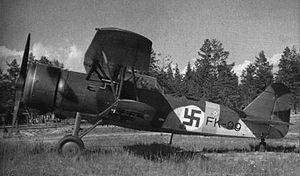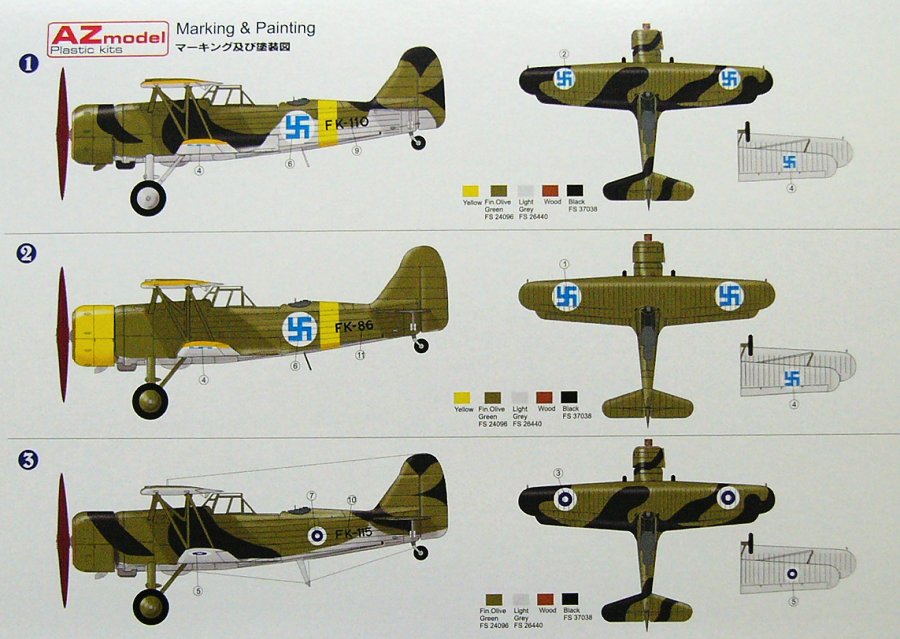Kone suunniteltiin vuonna 1933 korvaamaan vanhentuva Fokker C.V -lentokone. Prototyyppi lensi ensimmäisen kerran vuonna 1934 ja se oli esillä saman vuoden ilmailunäyttelyssä Pariisissa.

C.X:ssä oli Fokkerin tyypillinen sekarakenne: siivet olivat puuta ja runko teräsputkea. Verhoiluna oli rungon etuosassa kevytmetallilevyt ja muutoin koneessa oli kangasverhoilu. Prototyypissä oli Rolls-Royce Kestrel II V-moottori.
Alankomaiden Itä-Intian (Indonesian) ilmavoimat tilasi 10 konetta, joiden toimitukset alkoivat vuonna 1937. Alankomaiden kuninkaalliset ilmavoimat tilasivat 20 konetta, joista viimeiset 15 oli varustettu kuomulla.
Kaksi (2) konetta myytiin Espanjan tasavaltalaisille ja neljä (4) Suomen ilmavoimille.
Kaikkiaan 36 sarjakonetta rakennettiin Alankomaissa.
Saksan hyökättyä Alankomaihin 10. toukokuuta 1940 C.X-koneet toimivat tiedustelukoneina mutta pystyivät toimimaan vain miltei maanpinnan tasolla - tätä lentomenetelmää kutsuttiin nimellä hu-bo-be
(huisje-boompje-beestje, hollantia: talo-puu-eläin).
Suomen Puolustusministeriö tilasi hollantilaiselta Fokkerilta neljä Bristol Pegasus -moottorilla varustettua Fokker C.X -konetta ja hankki valmistuslisenssin 18.5.1936.
12. lokakuuta 1936 Valtion lentokonetehdas sai alustavan 13 koneen tilauksen.
2. joulukuuta 1936 tilaus laajennettiin 30 koneeseen. Fokkerin rakentamat mallikoneet (FK-78..81) toimitettiin Suomeen vuoden 1937 alussa ja lentokonetehdas toimitti lisenssillä rakennetut sarjakoneet (FK-82..111) vuoden 1938 kuluessa.
Kertyneistä varaosista koottiin vielä viisi konetta (FK-111..115) vuosina 1942–1943. Tunnus FK-111 oli kahdella koneella.
Fokker C.X:ää käytettiin useissa tiedustelulaivueissa tiedustelu- ja pommikoneena talvisota - jatkosota sekä Lapinsota aikana, vuosina 1939–1945.
Hitaudestaan johtuen "Frans-Kalle" ( Frans - Carl kärsi sodissa suuret tappiot, koska jatkosodan aikana hidas kone vanheni auttamatta ja tappiot kasvoivat. Kun sota päättyi jäljellä oli (5) viisi konetta.
Vuosien 1936-1958 aikana koneita oli käytössä yhteensä 39 kpl.
Fokker oli suomen paras kone lähitiedustelussa, ne tekivät n. 600h sotalentoja sekä pudottivat 60 tonnia pommeja.
Niitä käytettiin myös vaativissa tulenjohtotehtävissä, kuten esimerkiksi Tuuloksen suurhyökkäyksessä 1941. Sodissa menetettiin 17 konetta ja 25 lentäjää. Onnettomuuksissa menetettiin koneen käyttöaikana 1938–1955 yhteensä 20 konetta ja 17 lentäjää.
Tyypillä saatiin jatkosodassa jopa yksi ilmavoitto, vaikka aseistuksena oli hyvin vaatimaton konekivääri. Vain kaksi konetta poistettiin loppuunlennettyinä. Viimeinen kone tuhoutui onnettomuudessa vuonna 1958.
Miehistö: 2 (ohjaaja ja tähystäjä)
Pituus: 9,01 m
Kärkiväli: 12 m
Korkeus: 3,3 m
Siipipinta-ala: 31,5 m²
Tyhjäpaino: 1 890 kg
Lentopaino: 2 700 kg
Voimanlähde: Bristol Pegasus XII ilmajäähdytteinen 9-sylinterinen tähtimoottori, teho 835 hv
Huippunopeus: 356 km/h
Matkalentonopeus: 275 km/h
Lakikorkeus: 8 000 m
Lentomatka: 900 km
Aseistus: kaksi 7,7 mm Browning eturungossa. yksi 7,62 mm tähystäjän käytössä
Pommikuorma: 400–600

---------------------------------------------------------------------------------------------------
The Fokker C.X was a biplane scout and light bomber designed in 1933. It had a crew of two (a pilot and an observer).
It was originally designed for the Royal Dutch East Indies Army, in order to replace the Fokker C.V. Like all Fokker aircraft of that time, it was of mixed construction, with wooden wing structures and a welded steel tube frame covered with aluminium plates at the front of the aircraft and with fabric at the rear. The prototype was built in 1934 with a Rolls-Royce Kestrel V engine.
The East Indies Army ordered 13 C.Xs, but they were soon replaced in the scout/light bomber role by the American Martin B-10s. Until the Japanese attack on the Dutch East Indies in 1941, the C.X remained in use as a trainer and target tug.
The Dutch Air Force ordered 4 C.Xs,with Kestrel IIS engines. Later, 16 more with Kestrel V engines followed.
Four aircraft were sold to Finland. The Finns also license-produced 35 C.Xs until 1942. These C.Xs were equipped with Bristol Pegasus XII engines. One single machine was secretly sold to Spain. A license to build the machines resulted in only a single plane being completed before the end of the Spanish civil war.
Airspeed Ltd. in Great Britain got a license to build C.Xs for the British market as the Airspeed AS.22, but no orders were receive
During the German attack on the Netherlands in May 1940, the C.Xs served in their intended role as scouts and light bombers. The tactic of "hugging the ground" allowed the C.Xs to achieve some success. Two C.Xs and their crews escaped to France after the Dutch surrender.

The Finnish C.Xs served with distinction in the Winter War, the Continuation War and the Lapland War. The last of the seven Finnish C.Xs that survived the war crashed in 1958. The craft, designated FK-111, served as a target-towing craft in the Finnish Air Force. The plane crashed into a forest on 21 January 1958, killing the pilot (Second Lieutenant Aimo Allinen) and the winch-operator (2nd Ltn Antti Kukkonen).
C.X Series I : Fokker-built aircraft for the Dutch
C.X Series II : Fokker-built, 4 to Finland.
C.X Series III: Licence-built in Finland.
C.X Series IV: Licence-built in Finland.
Crew:Two
Length:(Dutch) 9.2 m (Finnish) 9.1 m ((Dutch)30 ft 2.25 in (Finnish) 29 ft 9 in)
Wingspan:12.00 m (39 ft 4.5 in)
Height:3.30 m (10 ft 10 in)
Empty weight:(Dutch and Finnish) Approx 1,400 kg ((Dutch and Finnish) 3,086 lb)
Loaded weight:(Dutch) 2,250 kg (Finnish) 2,500 kg ((Dutch) 4,960 lb (Finnish) 5,512 lb)
Max. takeoff weight:2,900 kg (6,393 lb)
Powerplant:1 × (Dutch) Rolls Royce Kestrel liquid-cooled V12 (Finnish) License-built Bristol Pegasus XII nine-cylinder radial, (Dutch)
485 kW (Finnish) 634 kW ((Dutch) 650 hp (Finnish) 830 hp)
Maximum speed:(Dutch) 320 km/h (Finnish) 356 km/h ((Dutch) 199 mph (Finnish) 211 mph)
Cruise speed:(Dutch) 270 km/h (Finnish) 275 km/h
Range:(Dutch) 850 km (Finnish) 850 km ((Dutch) 516 mi (Finnish) 522 mi)
Service ceiling:(Dutch) 8,700 m (Finnish) 8,400 m ((Dutch) 27,230 ft (Finnish) 27,560 ft)
Rate of climb:8.3 m/s ()
Armament: 2 × 7.9 mm (.31 in) machine guns fixed in top of front fuselage and a third manually aimed from rear cockpit
Underwing racks for 2 × 175 kg (385 lb) or 4 × 100 kg (220 lb) bombs

Ei kommentteja:
Lähetä kommentti
Kaikenlaiset kommentit ovat tervetulleita.